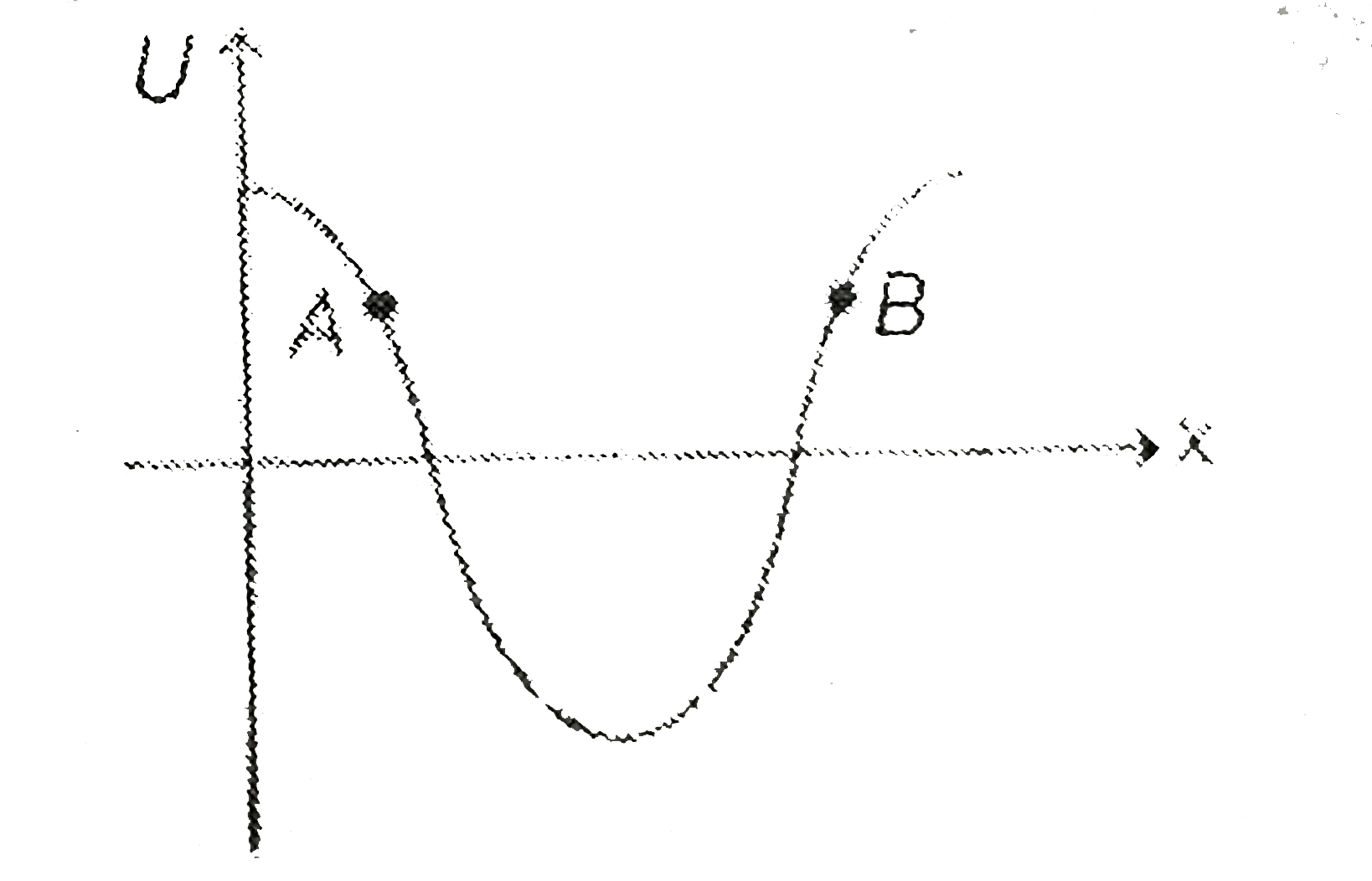The potential energy U of a body of unit mass moving in one dimensional conservative force field is given by U=x2−4x+3. All units are is SI. For this situation mark out the correct statement (s).
The body will perform simple harmonic motion about x=2 units.
The body will perform oscillatory motion but not simple harmonic motion.
The body will perform simple harmonic motion with time period √2πs.
If speed of the body at equilibrium position is 4ms, then the amplitude of oscillation would be 2√2m
The correct Answer is:A, C, D
U=x2−4x+3 and F=−dUdx=−(2x−4)
At equilibrium position F=0, so x=2cm
Let the particle is displaced by △x from equilibrium position i.e, from x=2, then restoring force on body is
F=−2(2+△x)+4=−2△x
i.e., Fα−△x, so performs simple harmonic motion about x=2m
Time period T=2π√mk=2π√12=√2πs
From energy conservation, mv2max2+Umin=Umax
1×422+(22−4×2+3)=(A+2)2−4(A+2)+3
Where A is amplitude solving the above equation we get A=2√2m.
Topper's Solved these Questions
- BOOK - CENGAGE PHYSICSCHAPTER - LINEAR AND ANGULAR SIMPLE HARMONIC MOTIONEXERCISE - Assertion Reasoning6videos
LINEAR AND ANGULAR SIMPLE HARMONIC MOTION
- BOOK - CENGAGE PHYSICSCHAPTER - LINEAR AND ANGULAR SIMPLE HARMONIC MOTIONEXERCISE - Comprehension33videos
LINEAR AND ANGULAR SIMPLE HARMONIC MOTION
- BOOK - CENGAGE PHYSICSCHAPTER - LINEAR AND ANGULAR SIMPLE HARMONIC MOTIONEXERCISE - Single Correct107videos
LINEAR AND ANGULAR SIMPLE HARMONIC MOTION
- BOOK - CENGAGE PHYSICSCHAPTER - KINETIC THEORY OF GASES AND FIRST LAW OF THERMODYNAMICSEXERCISE - Interger11videos
KINETIC THEORY OF GASES AND FIRST LAW OF THERMODYNAMICS
- BOOK - CENGAGE PHYSICSCHAPTER - MISCELLANEOUS KINEMATICSEXERCISE - Interger type3videos
MISCELLANEOUS KINEMATICS
Similar Questions
Potential energy (U) of a body of unit mass moving in a one-dimension conservative force field is given by, U=(X2−4X+3). All units are in S.I.
View SolutionPotential energy (U) of a body of unit mass moving in a one-dimension conservative force fileld is given by, U = (x2 – 4x + 3). All units are in S.I. (i) Find the equilibrium position of the body. (ii) Show that oscillations of the body about this equilibrium position is simple harmonic motion & find its timeperiod. (iii) Find the amplitude of oscillations if speed of the body at equilibrium position is 2√6 m/s.
View Solution
Knowledge Check
- Question 1 - Select One or More
The potential energy (U) of a body of unit mass moving in a one-dimension foroce field is given by
U=(x2−4x+3) . All untis are in S.LAFind the equilibrium position of the bodyBShow that oscilliations of the body about this equilibrium positon in sample harmonic motion and find its time periodCFind the amplitude of oscilliations if speed of the body at equilibrium position is 2√6m/sDFind the amplitude of oscillators if speed of the body at equlibrium position is 2√6m/s. - Question 2 - Select One
The potential energy of an object of mass m moving in xy plane in a conservative field is given by U = ax + by , where x and y are position coordinates of the object. Find magnitude of its acceleration :-
A√a2+b2mBa2+b2mC√a2+b2DNone - Question 3 - Select One
S1: If the internal forces within a system are conservative, then the work done by the external forces on the system is equal to the change in mechanical energy of the system.
S2: The potential energy of a particle moving along x− axis in a conservative force field is U=2x2−5x+1 is S.I. units. No other forces are acting on it. It has a stable equalibrium position at one point on x− axis.
S3:Internal forces can perform net work on a rigid body.
S4: Internal forces can perform net work on a non− rigid body.ATTFTBTFFTCFFTTDFTFT
The potential energy of a particle under a conservative force is given by U(x)=(x2−3x) J. The equilibrium position of the particle is at
View SolutionThe potential energy of a particle under a conservative force is given by U(x)=(x2−3x) J. The equilibrium position of the particle is at
View SolutionThe potential energy of body of mass 2 kg moving along the x-axis is given by U=4x2, where x is in metre. Then the time period of body (in second) is
View SolutionThe potential energy of a particle of mass 1 kg in a conservative field is given as U=(3x2y2+6x) J, where x and y are measured in meter. Initially particle is at (1,1) & at rest then:
View SolutionPotential energy v/s position curve for one dimensional conservative field is shown. Force at A and B is respectively.
 View Solution
View Solution

